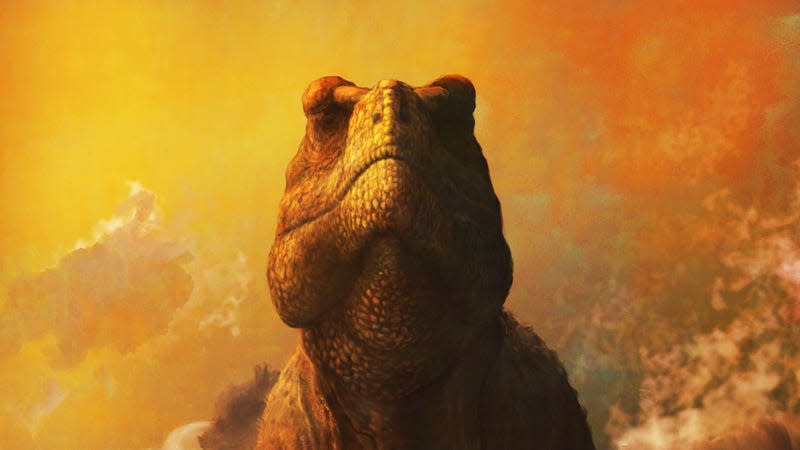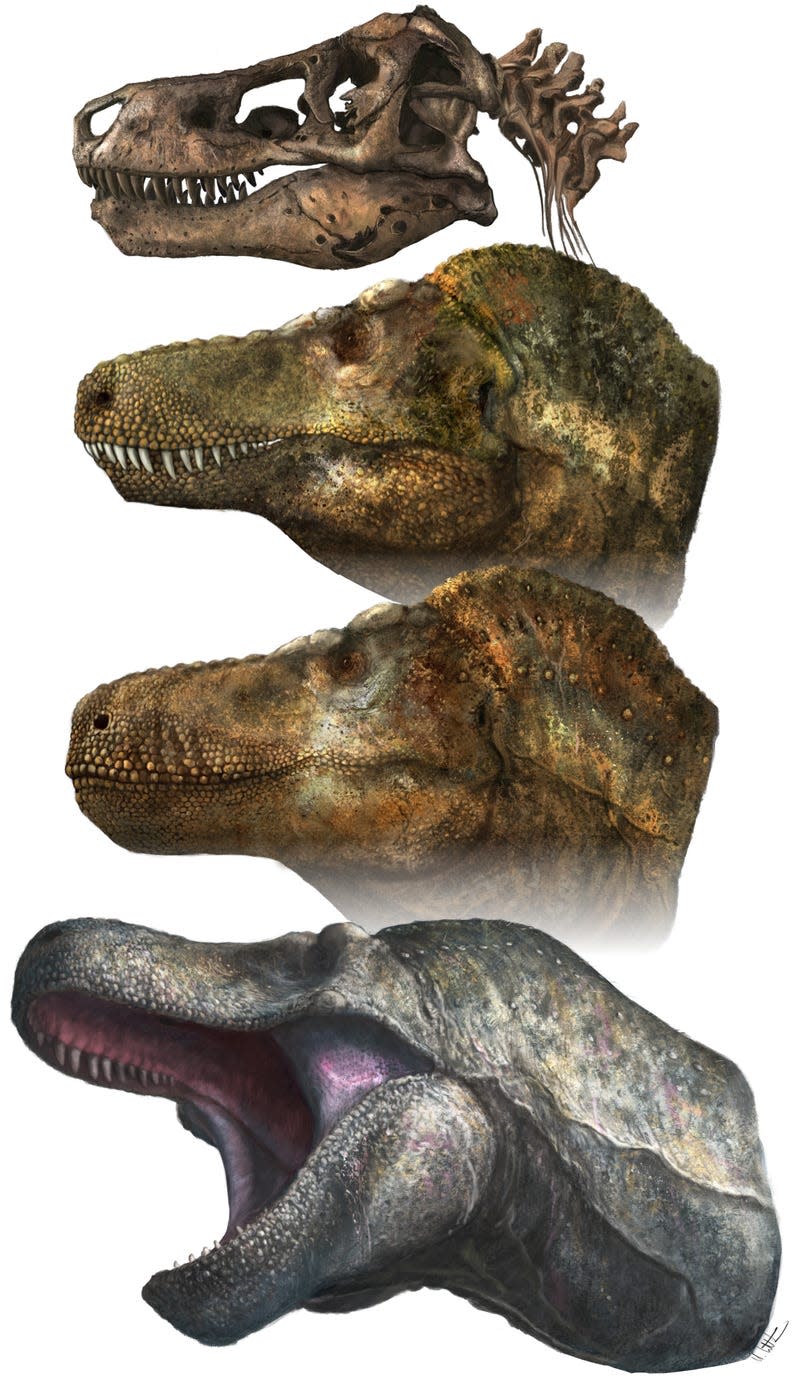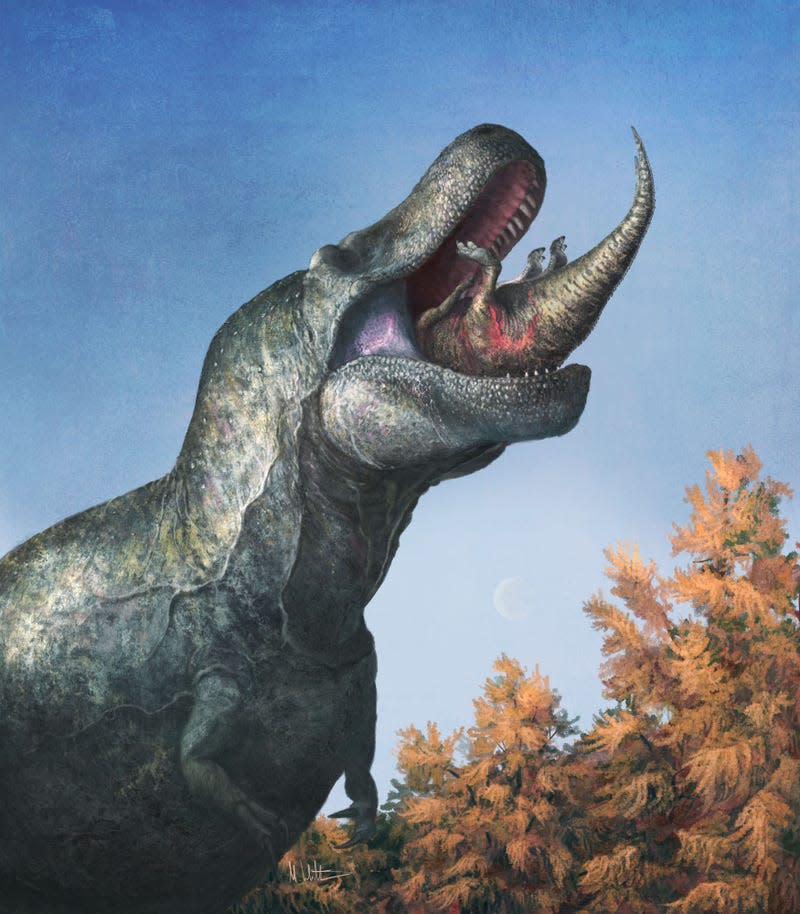Sorry, Jurassic Park: T. Rex Had Lips

A Tyrannosaurus rex with its mouth closed (no teeth visible!)
Theropods like T. rex and Velociraptor had sheaths of scaly skin covering their long, pointy teeth, according to a team of paleontologists who recently studied the ancient predators.
That’s a big shift from the imagery most dinosaur-related media has put out in the last century. Popular films like Jurassic Park have given the public inaccurate ideas about what dinosaurs actually looked like (and pterosaurs, and mosasaurs), something that some modern dino-media aims to correct. The new paper is the latest academic work seeking to change the narrative.
Read more
These Winning Close-Up Photos Show Life That's Often Overlooked
Remembering Enterprise: The Test Shuttle That Never Flew to Space

A T. rex skull and reconstructions of the animal’s head, with labial scales.
“If they’re correct, T. rex wouldn’t have had a toothy grin like it is often portrayed in films and art, but more of a gummy smile,” said Steve Brusatte, a paleontologist at the University of Edinburgh who is unaffiliated with the new work. “There has been much debate on this issue of tyrannosaur lips over the last few years, and I think this study makes a good case.”
The research team studied tooth wear across a range of theropod species and compared it to the state of tooth wear in modern reptilian groups that both have and lack coverings for their teeth, such as alligators, iguanas, and monitor lizards. Their research is published today in the journal Science.
Technically, the soft tissue tooth coverings are actually labial scales, not lips in the mammalian sense. They’re more akin to the soft tissue structures on a Komodo dragon, the extant, endangered monitor lizard native to Indonesia.
The research team posits that these labial scales would have protected theropods’ serrated teeth over the course of their lives, preventing the dentition from wearing down. Indeed, the theropod teeth studied by the researchers did not show the signs of wear that would have resulted from exposure and dehydration.
“Besides the idea that the teeth would be too large to be covered, the closest living toothed relatives of dinosaurs are crocs, hence the incorrect assumption that the same condition prevailed in theropods,” Robert Reisz, a paleontologist at the University of Toronto and co-author of the paper, wrote in an email to Gizmodo. “As the paper shows, however, ancient terrestrial crocs had theropod-like teeth, rather than the peculiar teeth of living crocs.”

Inaccurate representations of dinosaurs are still rife in popular media and discourse. Reconstructions of dinosaurs in the past gave some five legs, misconstrued pterosaurs as dinosaurs, and imagined T. rex in a more vertical stance.
Reisz said the team first considered comparing theropod teeth to those of modern crocodilians after seeing wear on crocodile teeth in fossil collections. They were easily able to distinguish tooth wear from exposure in life from postmortem effects to the teeth.
Though some remarkable soft tissue fossils have been found—including one preserving a dinosaur’s cloaca, the catch-all orifice for reproduction and waste expulsion—paleontologists have never unearthed a theropod with an immaculately preserved maw. Such a find would certainly help clarify the labial situation for some of Earth’s most famous predators.
“Ultimately, there is no good modern-day model for a bus-sized superpredator with the head the size of a bathtub that crushed the bones of its prey,” Brusatte told Gizmodo. “I do think, however, that this study has made the single strongest case for lippy tyrannosaurs yet.”
More: These 13 Images Depict the Most Realistic CGI Dinosaurs Ever
More from Gizmodo
Sign up for Gizmodo's Newsletter. For the latest news, Facebook, Twitter and Instagram.

